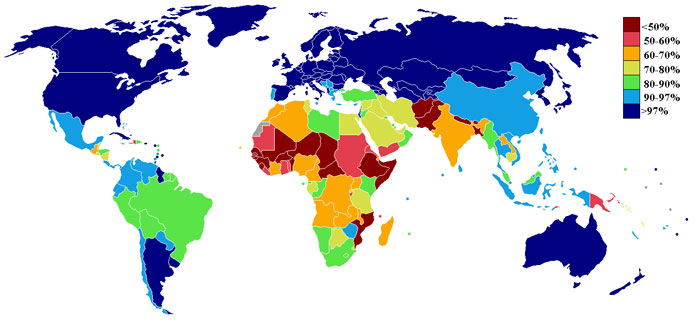
Source: Literacy rate world, Dwrcan, Wikimedia.
As you continue to determine the standard of living for your selected countries, another factor to examine is the literacy rate. Literacy rate as defined by The World Bank is the percentage of people ages 15 and above who can, with understanding, read and write a short, simple statement on their everyday life. Take a look at the map below that represents literacy rates around the world.

Source: Literacy rate world, Dwrcan, Wikimedia.
Answer the following questions based on the map above:


![]() This next video will give you a better understanding of how literacy rates impact the standard of living. After watching the video, answer the questions that follow in your notes.
This next video will give you a better understanding of how literacy rates impact the standard of living. After watching the video, answer the questions that follow in your notes.
Source: euronews learning world: Adult literacy- the right to read, Euronews, YouTube
Mozambique
Spain
Washington D.C.